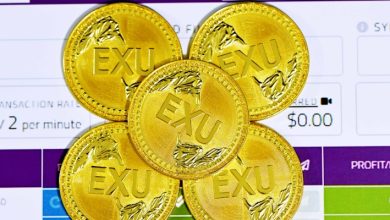A Comprehensive Review of Leading Crypto Exchanges in 2025

- A Look into the Evolution of Crypto Exchanges
- Analyzing the Top Crypto Exchanges of 2025
- Comparing Security Features of Leading Crypto Exchanges
- The User Experience of Popular Crypto Exchanges
- Future Trends in Cryptocurrency Trading Platforms
- Regulatory Challenges Faced by Crypto Exchanges in 2025
A Look into the Evolution of Crypto Exchanges
Over the past decade, the world of cryptocurrency exchanges has undergone significant transformations. In the early days, exchanges were often unreliable and vulnerable to hacks, leading to a lack of trust among users. However, as the industry matured, exchanges began to prioritize security and user experience, leading to the emergence of a new generation of platforms.
These modern exchanges offer a wide range of features, from advanced trading tools to integrated wallets and decentralized finance (DeFi) capabilities. They also prioritize regulatory compliance, working closely with authorities to ensure that they meet legal requirements. This shift towards legitimacy has helped to attract a broader range of users, from institutional investors to retail traders.
One of the most notable trends in the evolution of crypto exchanges has been the rise of decentralized exchanges (DEXs). These platforms allow users to trade directly with one another, without the need for a centralized intermediary. While DEXs initially faced challenges such as low liquidity and limited functionality, improvements in technology have helped to address these issues, making them an increasingly popular choice among traders.
Looking ahead, it is clear that the world of cryptocurrency exchanges will continue to evolve. As blockchain technology becomes more mainstream and regulations evolve, exchanges will need to adapt to meet the changing needs of users. Whether it’s through the integration of new technologies or the development of innovative features, the future of crypto exchanges promises to be an exciting one.
Analyzing the Top Crypto Exchanges of 2025
As of 2025, the top crypto exchanges continue to play a crucial role in the digital asset ecosystem. These platforms serve as the primary gateway for users to buy, sell, and trade various cryptocurrencies. Let’s take a closer look at some of the leading crypto exchanges that have emerged as key players in the market:
- Binance: Binance remains one of the most popular and widely used crypto exchanges globally. Known for its extensive range of trading pairs and low fees, Binance has established itself as a go-to platform for both retail and institutional traders.
- Coinbase: Coinbase, another major player in the crypto exchange space, is renowned for its user-friendly interface and strong security measures. The platform offers a diverse selection of cryptocurrencies for trading and has gained a reputation for reliability and trustworthiness.
- Kraken: Kraken is a well-established exchange known for its robust security features and regulatory compliance. With a focus on providing a secure trading environment, Kraken has attracted a loyal user base of traders and investors.
- Huobi: Huobi is a prominent exchange that offers a wide range of services, including spot trading, futures trading, and margin trading. The platform is known for its liquidity and advanced trading tools, making it an attractive choice for experienced traders.
- Bitfinex: Bitfinex is a popular exchange that caters to both retail and institutional traders. The platform offers a variety of trading options, including margin trading and peer-to-peer financing, making it a versatile choice for users with different trading preferences.
These top crypto exchanges have distinguished themselves through their reliability, security, and range of services, making them preferred choices for users looking to engage in cryptocurrency trading. By staying at the forefront of innovation and adapting to the evolving needs of the market, these exchanges continue to shape the landscape of the crypto industry in 2025.
Comparing Security Features of Leading Crypto Exchanges
When comparing the security features of leading crypto exchanges, it is essential to consider various factors that can help ensure the safety of your digital assets. One crucial aspect to look at is the use of two-factor authentication (2FA) to add an extra layer of protection to your account. Additionally, encryption techniques such as SSL/TLS can help safeguard your data during transactions and account access.
Another important security feature to consider is the implementation of cold storage for the majority of funds held by the exchange. Cold storage keeps the majority of cryptocurrencies offline, making them less vulnerable to hacking attempts. Moreover, regular security audits and bug bounty programs can help identify and fix potential vulnerabilities before they are exploited by malicious actors.
Furthermore, leading crypto exchanges often provide insurance coverage for funds held on their platform, offering an additional level of protection for users in case of a security breach. It is also worth considering the reputation and track record of an exchange in terms of security incidents and how they have handled them in the past.
In conclusion, when evaluating the security features of different crypto exchanges, it is crucial to prioritize platforms that implement robust security measures such as 2FA, encryption, cold storage, security audits, bug bounty programs, and insurance coverage. By choosing a platform with strong security protocols in place, you can better protect your digital assets and trade with peace of mind.
The User Experience of Popular Crypto Exchanges
When it comes to the user experience of popular crypto exchanges, there are several key factors to consider. These platforms play a crucial role in facilitating the buying, selling, and trading of cryptocurrencies. The ease of use, security features, customer support, and overall functionality of these exchanges can greatly impact the overall user experience.
One of the most important aspects of a crypto exchange is its user interface. A clean and intuitive interface can make navigating the platform a breeze, even for beginners. On the other hand, a cluttered and confusing interface can lead to frustration and potential errors. Therefore, exchanges that prioritize user-friendly design tend to have higher user satisfaction rates.
Security is another critical factor when it comes to choosing a crypto exchange. Users want to feel confident that their funds and personal information are safe from hackers and other malicious actors. Exchanges that offer robust security measures, such as two-factor authentication and cold storage for funds, are often preferred by users.
Customer support is also essential for a positive user experience. In the fast-paced world of cryptocurrency trading, issues can arise at any time. Having access to responsive customer support can help users resolve problems quickly and efficiently. Exchanges that offer multiple support channels, such as live chat, email, and phone support, are typically viewed more favorably by users.
Overall functionality is the final piece of the puzzle when it comes to the user experience of crypto exchanges. Users want a platform that is fast, reliable, and offers a wide range of trading pairs. Exchanges that are constantly updating their features and adding new cryptocurrencies to their list tend to attract more users.
Future Trends in Cryptocurrency Trading Platforms
In the coming years, we can expect to see significant advancements in cryptocurrency trading platforms. These platforms will likely become more user-friendly, secure, and efficient. One trend that is already emerging is the integration of artificial intelligence (AI) and machine learning algorithms to help traders make better decisions. This technology can analyze market trends and patterns to predict future price movements.
Another trend to watch out for is the increased regulation of cryptocurrency exchanges. As the industry matures, regulators are likely to impose stricter rules to protect investors and prevent fraud. This could lead to a more transparent and trustworthy trading environment. Additionally, we may see more decentralized exchanges (DEXs) gaining popularity, offering users greater control over their funds and privacy.
Furthermore, the rise of tokenization is expected to revolutionize the way assets are traded. By representing real-world assets on the blockchain, tokenization can make trading more accessible and efficient. Investors will be able to trade fractions of assets, such as real estate or stocks, without the need for intermediaries.
Regulatory Challenges Faced by Crypto Exchanges in 2025
Crypto exchanges face a myriad of regulatory challenges in 2025 as governments around the world strive to keep up with the rapidly evolving digital asset landscape. One of the key issues that exchanges are grappling with is the lack of clear and consistent regulations across different jurisdictions. This regulatory uncertainty can make it difficult for exchanges to operate legally and can lead to increased compliance costs.
Another challenge for crypto exchanges is the increasing scrutiny from regulatory bodies, which are becoming more vigilant in their efforts to combat money laundering and terrorist financing. Exchanges are under pressure to implement robust Know Your Customer (KYC) and Anti-Money Laundering (AML) procedures to ensure compliance with these regulations. Failure to do so can result in hefty fines and even the suspension of operations.
Moreover, the issue of data privacy is becoming increasingly important for crypto exchanges. With the growing concerns around data breaches and cyber attacks, exchanges need to ensure that they have strong security measures in place to protect their users’ personal information. This includes encryption technologies, multi-factor authentication, and regular security audits.
In addition to these challenges, exchanges also need to navigate the complexities of tax regulations, which can vary significantly from one jurisdiction to another. Ensuring compliance with tax laws is essential for exchanges to avoid legal repercussions and maintain a positive reputation in the industry. This requires exchanges to work closely with tax authorities and legal experts to stay abreast of the latest developments in this area.
Overall, the regulatory landscape for crypto exchanges in 2025 is fraught with challenges that require careful navigation and a proactive approach to compliance. By staying informed about regulatory changes, implementing robust compliance measures, and collaborating with regulators, exchanges can mitigate the risks and continue to thrive in the dynamic world of digital assets.



